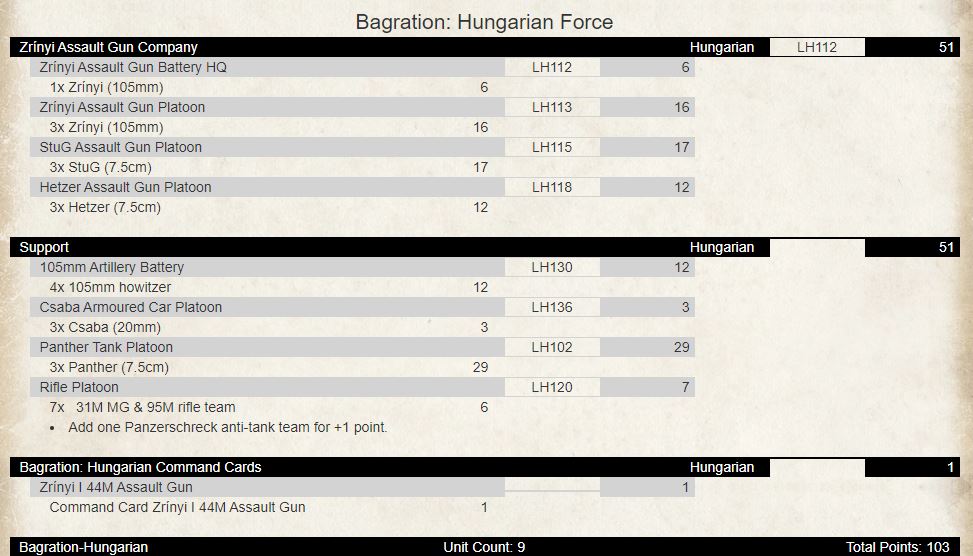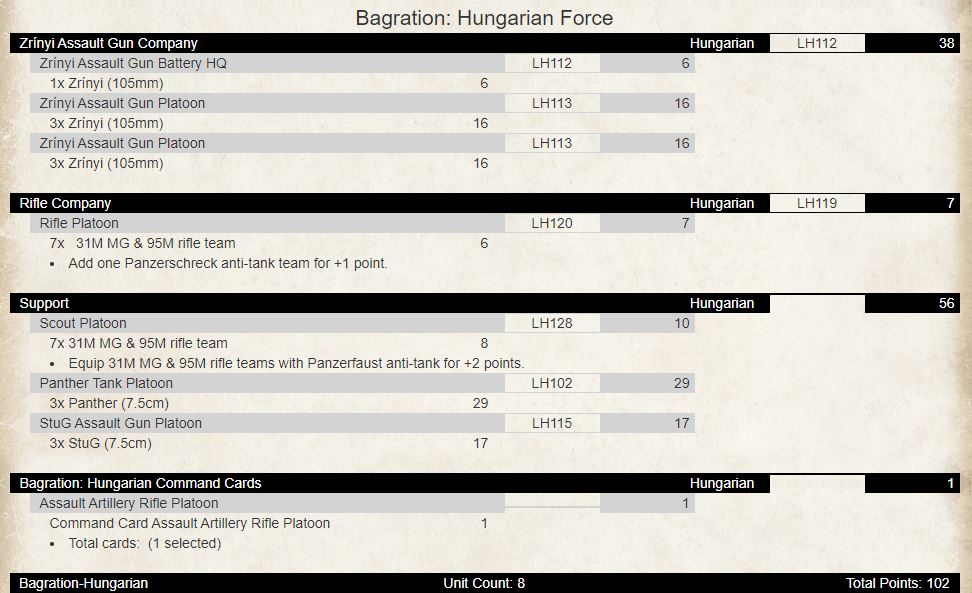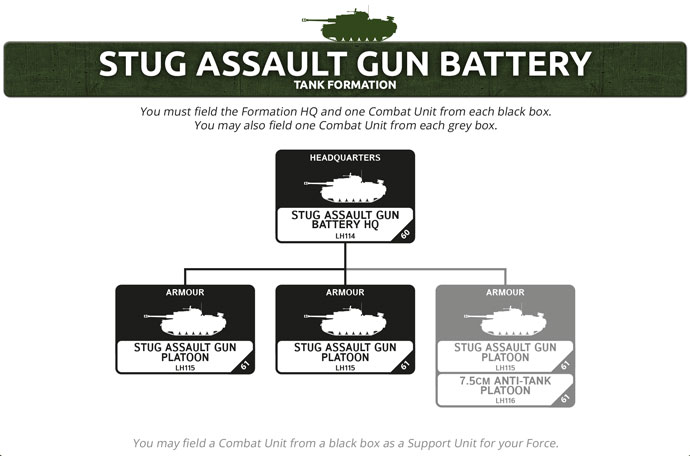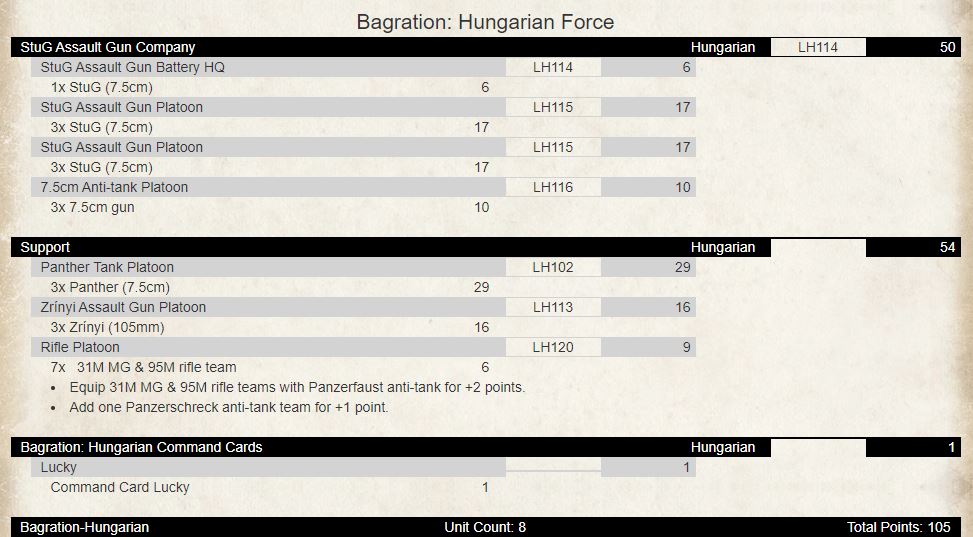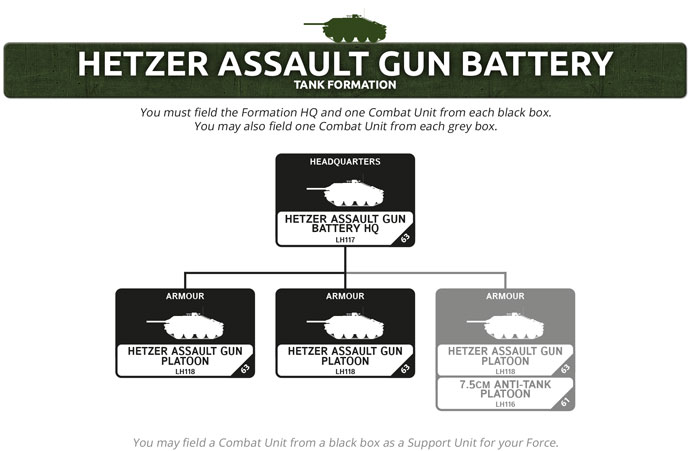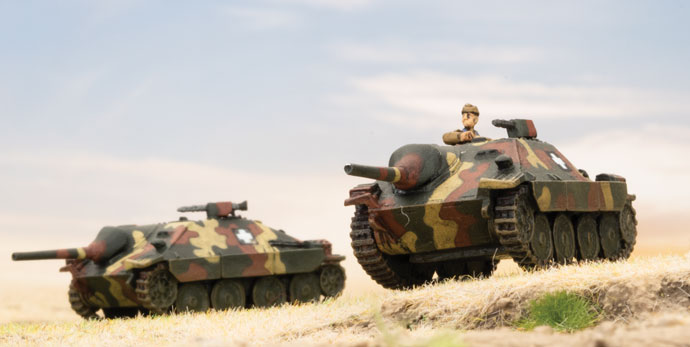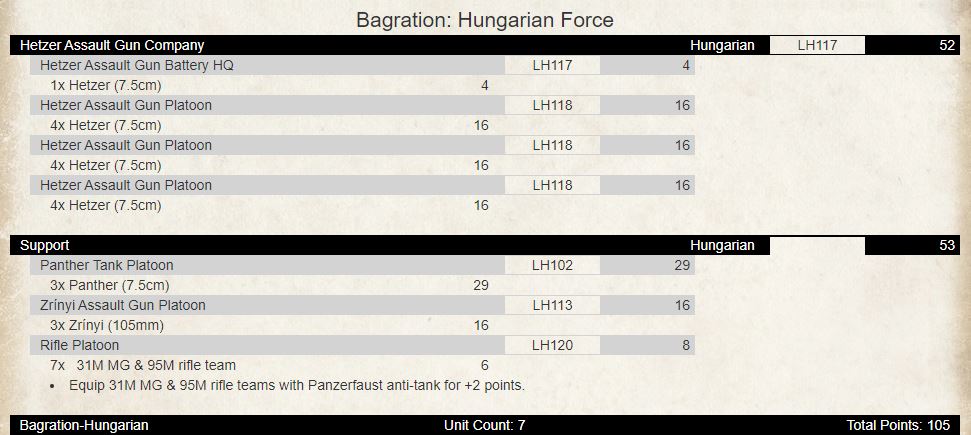With John Lee
With the release of Bagration: Axis Allies, each nation gets one infantry formation in the book. Now you must be thinking what about the rest of them. Well, they are in the command cards. The premise is that you take the core infantry formation and then apply the command cards to create the formation you want to play. For the Romanians, there are seven infantry formations (well six and one cavalry but who is counting) in total you can take. So, let us explore the core infantry formation (Motorised Rifle) first then look at the six command card options – Pioneer, Rifle, Guard Division, Training Division, Mountain Rifle, Cavalry Squadron.
The Motorised Rifle Formation is comprised of the following:
The Romanian infantry are rated Confident Careful Trained and have the special rule “Peasant Army”. This rule is “Each unit has two columns on their unit cards for Motivation and Skill – Standard and Elite. At the start of the game, roll a die and on a 5+ use the Elite column.” So, in the case of this formation, each unit that you roll a 5+ on (either at start of the game or as they come on from reserve), you have a better last stand rating of 4+ and veteran instead of trained. The other rating, they have is “Defend the Homeland”. This gives you a better assault rating – so on a 3+. Very handy for your infantry!
The HQ platoon comprises of two ZB24 rifle teams for 2pts. There are no addons such as panzerfausts. This is the basic HQ.
With the motorised rifle platoons, you have several options to optimise how you want the makeup of these platoons to look. Five ZB30 MG teams for 6pts, seven ZB30 MG teams for 8pts or nine teams for 11pts. Now what I like about these troops is that they are MG armed meaning ROF 3 (stationary) or 2 (moving/pinned) which is great for assaulting or defensive fire. You can add Panzerfausts for +2pts to the platoon and is a no brainer for me here regardless of team type or size. You can also beef up the platoons by adding a 60mm mortar team for 1pt or a Panzerschreck team for +1pt. I like to take the Panzerschreck, in my mind totally worth it if you have the points. Adds a second AT option for defending assaults or jumping out and having a go at a tank that wanders too close. Makes most tanks think twice about assaulting facing two AT11/12 teams.
The 60mm mortar is interesting, gives your platoons their own template – works like the US mortar. Yes, you need to reroll hits being only one weapon but sometimes all you need is one hit for the pin before you assault with the rest of your platoon.
The Armoured Rifle Platoon is slightly different in that they have TB (German Sd Kfz 251) half-tracks to ride in and no 60mm mortars. The interesting thing here is that you now have a platoon that can be mounted in their half-tracks for assault or dismounted with additional MG firepower to support an assault or help with defensive fire. Five ZB30 MG teams with three TB half-tracks for 8pts, seven ZB30 MG teams with four TB half-tracks for 11pts or nine teams with five TB half-tracks for 15pts. That is right, FIVE half-tracks with a maxed-out platoon! You can add Panzerfausts for +2pts to the platoon and is a no brainer for me here regardless of team type or size. You can also beef up the platoons by adding a Panzerschreck team for +1pt.
This is an interesting option to take, I think. If you take the Armoured Rifle platoon instead of a Rifle Platoon as your third platoon, gives you another offensive option to either assault or come on from reserve to relieve pressure on a contested objective using their half-tracks speed to get there and if required, launch a mounted assault.
The next platoon to look at is the ZB53 Machine-Gun platoon where you can have four of these teams for 4pts. Something to consider taking, especially if you do not take the Armoured Rifle platoon. Adds another platoon for the formation count. I do not always take these but can be useful to bolster defending an objective or protect artillery.
Up next are the mortar platoons, starting with the 81mm Mortar Platoon – I think one of the best buys in the formation with two for 3pts, three for 4pts, four for 6pts. This is an absolute no brainer – range of 48” and can fire a smoke bombardment. This is one of my core units for this formation and three mortars are the best price point.
The 120mm Mortar Platoon is also a great option – two for 3pts, four for 6pts, and six for 9pts. Taking six allows you to reroll misses. Combined with repeat bombardments, can make your opponent squirm rerolling saves. If you roll 5+ for the peasant army rule for this unit, they become veteran allowing you to range in much easier. Another no brainer for me with a range of 56”, AT2 and FP3+ and can also fire a smoke bombardment! Another core one for me.
The final units to round out the formation are the Anti-tank Platoons. The 47mm Anti-tank Platoon has two guns for 3pts or four for 7pts. Useful AT8 FP4+ with a range out to 24”. The 50mm Anti-tank Platoon has two guns for 5pts or three for 7pts. Better AT9 FP4+ with a range out to 28”. Great little units to provide some AT support for defending assaults or keep your opponent’s recon elements honest and provide another unit for the formation break.
Whilst the Romanians do not have high end AT (14 or greater) in their force, they can take Soviet or German allies to help with that. I feel though that with the infantry formation, you may not even need it, as the 75mm M43 Anti-tank is AT13 out to 36” and you can take two platoons in your force! Let us look at two lists – one with allies and one without. Lists will be based on 105pts.
Seven units for the formation break. Four artillery templates. Six guns with AT13 and a unit with spearhead to get your Armoured Rifle platoon into assault range quickly with TA Assault Guns in support and some light tanks to run a diversion on the other flank or to help with the assault.
Now you have the AT14 you need and six units for the formation break. Had to drop the Armoured Rifle platoon and one of the 75mm M43 platoons but bring in a TACAM T-60 Tank-hunter platoon to do it though. A Soviet allied option would provide you with five IS-2 for one more point than the Tiger platoon in which we need to remove one of the 60mm mortar teams to achieve that. On reflection, I think that the IS-2 company of five tanks would suit this list – but again choose what suits your playstyle.
Now onto the six command card formations. First up is the Pioneer Company and is comprised of the following:
- 1 Infantry Company HQ
- 2-3 Pioneer Platoon
The platoons have the same characteristics as the core Motorised Rifle Formation. The difference is that you pay an additional 1pt for the formation. The HQ platoon and Pioneer platoons can dig in on a 2+ and cross minefields on a 2+. You also pay an extra 1pt for each Pioneer Platoon. There are no other units in the formation, so if you take it, you will probably want to take three platoons and maybe take some allied Soviet or German heavy armour, 75mm M43 AT guns, and some artillery would help too.
You have a maxed-out formation and can leave two platoons defending objectives if required. The Tigers for heavy AT work, four artillery templates, AB Armoured Cars for spearhead with AT13 AT guns to provide overwatch. If you want to swap out Tigers for five IS-2s then also remove the lucky card.
The next formation to look at is the Rifle Company. The units that make up this formation are:
- 1 Rifle Company HQ
- 2-3 Rifle Platoon
- 0-1 Rifle Company ZB53 Machine-Gun Platoon
- 0-1 Rifle Company 81mm Mortar Platoon
- 0-1 Motorised 120mm Mortar Platoon
- 0-1 Rifle Company 50mm Anti-tank Platoon or Rifle Company 47mm Anti-tank Platoon or 47mm Infantry Gun Platoon
- 0-1 Scout Platoon

- Rifle Platoon: -3 pts per unit
- Rifle Company ZB53 Machine-Gun Platoon: -1pt per unit
- Rifle Company 81mm Mortar Platoon: 2pts for two, 3pts for four
- Rifle Company 50mm Anti-tank Platoon: 3pts for two, 5pts for three
- Rifle Company 47mm Anti-tank Platoon: 3pts for two, 4pts for three
A cheaper formation and you get more into your list – just do not expect them to be assaulting.
Seven platoons for the formation break. Two platoons backed up by two platoons of AT13 guns to anchor your defence along with HMGs. Scout platoon (armed with SMGs) is your either your reserve platoon to reinforce a defence or to spearhead your IS-2s into assault on turn 2 supported by Stugs and two artillery templates.
The next two formations are based on the Rifle Company and have either better or worse ratings. The first is the Guard Division. For +1pt per unit in the formation, they gain Fearless Careful (but still Green or whatever their skill is) and lose the Peasant Army rule. Unusual to have this combo but makes for an interesting formation – especially for assaulting the enemy.
With Fearless Careful Infantry, I have maxed it out with four platoons (including the scouts) that should be able to take on all comers backed by two platoons of AT13 guns and two templates. T-4s and Stugs to provide mobile support.
The second card that transforms the Rifle Company is the Training Division. For -1pt, all units in the formation become Reluctant Aggressive Green, and lose the Peasant Army rule. All gun and weapons teams now have assault 6.
Very similar to the Rifle Company but with an added rifle platoon and only dropping the HMGs – still seven units for the formation break. Still need the IS-2s for offensive operations or assaulting and use the scout platoon to spearhead them in.
The next formation is the Mountain Rifle Company. The units that make up this formation are:
- 1 Mountain Rifle Company HQ
- 2-3 Mountain Rifle Platoon
- 0-1 Motorised ZB53 Machine-Gun Platoon
- 0-1 Motorised Company 81mm Mortar Platoon
- 0-1 Motorised 120mm Mortar Platoon
- 0-1 Mountain 47mm Infantry Gun Platoon
- 0-1 Motorised 50mm Anti-tank Platoon or Motorised Company 47mm Anti-tank Platoon
- 0-1 Mountain 75mm Artillery Battery
Main differences here are the Mountain Platoons and the 75mm Artillery Battery in the formation. The Formation HQ and Mountain Rifle Platoons also have the attributes from the Mountaineer Command Card. The rule on the card is “Teams that start their Movement Step adjacent to a cliff or mountain side (or another similar Impassable terrain feature) roll a Skill Test. If successful, the Team may move using Terrain Dash across the terrain”.
The Mountain Rifle Platoons ROF drops from 3/2 to 2/1 for -2pts per unit. Mountain 47mm Infantry Gun Platoon has three guns for 4pts and no gun shield and is Confident Trained Careful. The Mountain 75mm Artillery Battery is a useful addition and provides some flavour to the formation. It has an indirect range of 64” with AT2 FP4+ and smoke bombardment. A direct fire range of 16” with AT5 FP3 and smoke capability. Two for 4pts or four for 8pts.
Eight units for the formation break, three templates, spearhead with the armoured cars and both static and mobile high end AT guns. This army is more suited to defence and manoeuvre with one platoon for defence mixed in with HMGs and AT guns with the remaining platoons to go on the offence.
The final and most exciting formation is the Cavalry Squadron! The units that make up this formation are:
- 1 Company HQ
- 2 Cavalry Troop
- 0-1 Cavalry Troop or Cavalry Scout Troop
- 0-1 Motorised ZB53 Machine-Gun Platoon
- 0-1 Motorised Company 81mm Mortar Platoon
- 0-1 Motorised 50mm Anti-tank Platoon or Cavalry 45mm Anti-tank Platoon
The Company HQ is made up of two teams for 2pts. The Cavalry is Confident Careful Trained and has the Peasant Army Rule. ROF is 2/1 and assault on 3+. The Cavalry Troop is made up of four ZB30 MG & ZB24 rifle team for 4pts or seven teams for 6pts. Add panzerfaust for +2pts. Add a 60mm mortar for +1pt. The Cavalry Scout Troop costs an additional point and gain Scout and Spearhead and use rifles only so ROF is 1/1 slow firing. Cavalry 45mm Anti-tank Platoon is comprised of captured Soviet long 45mm guns. They have a 20” range with AT8 FP4+. Two guns for 3pts or three for 5pts.
Six platoons for the formation break. Two templates and high-end AT. Maxed out cavalry troops including one Scout Cavalry Troop. Use that troop for spearhead to get all three troops into position using their speed to dismount and assault. 20” cross country move, whilst mounted and follow me extends another 4” will get you across the board quickly. Also if coming from reserve can get there quickly when mounted!
One last thing to look at before wrapping up. There is one warrior who you can take with either a Motorised Rifle Platoon or Rifle Platoon – Aurel Sandu.
Aurel Sandu Command Card: The unit leader may reroll their infantry save once per turn. Infantry teams cross minefields safely on 2+. Tactics rating of 3+. Costs 4pts.
So, there you have it – seven infantry formation options to choose from. Romanian Infantry have some uniqueness about them with Cavalry, Guards, Motorised Rifles that you can exploit in your games. I hope this has been of some help. Happy List Building!

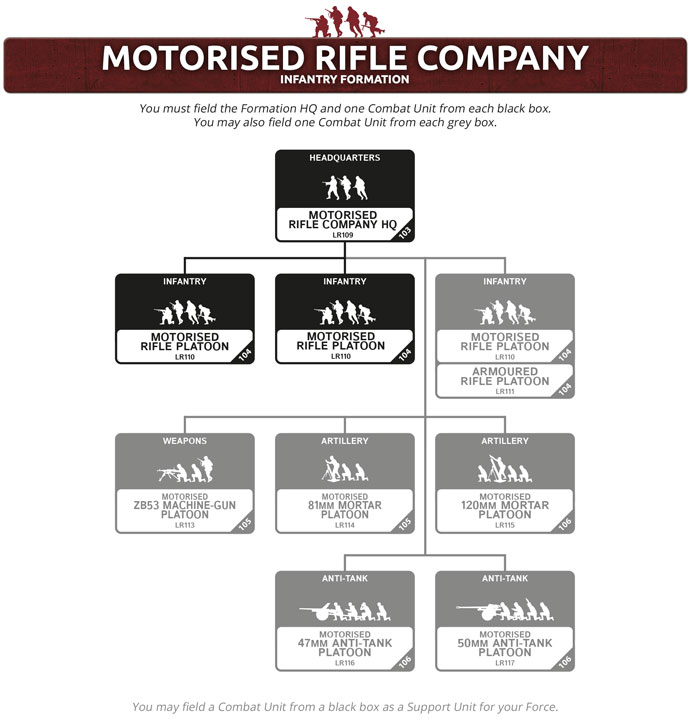
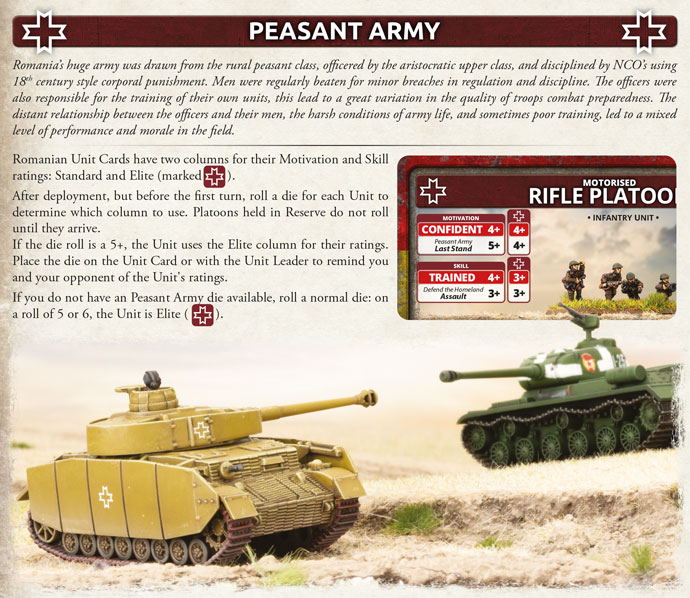
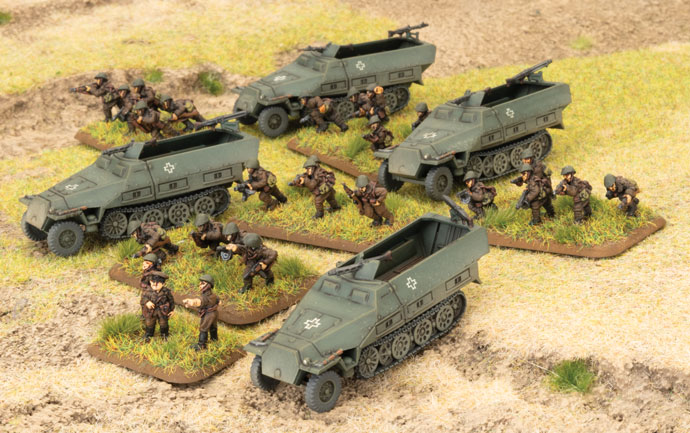
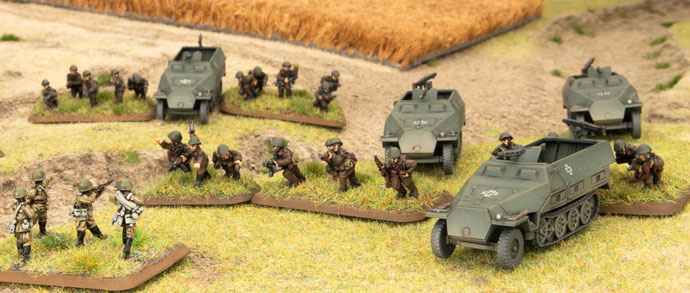
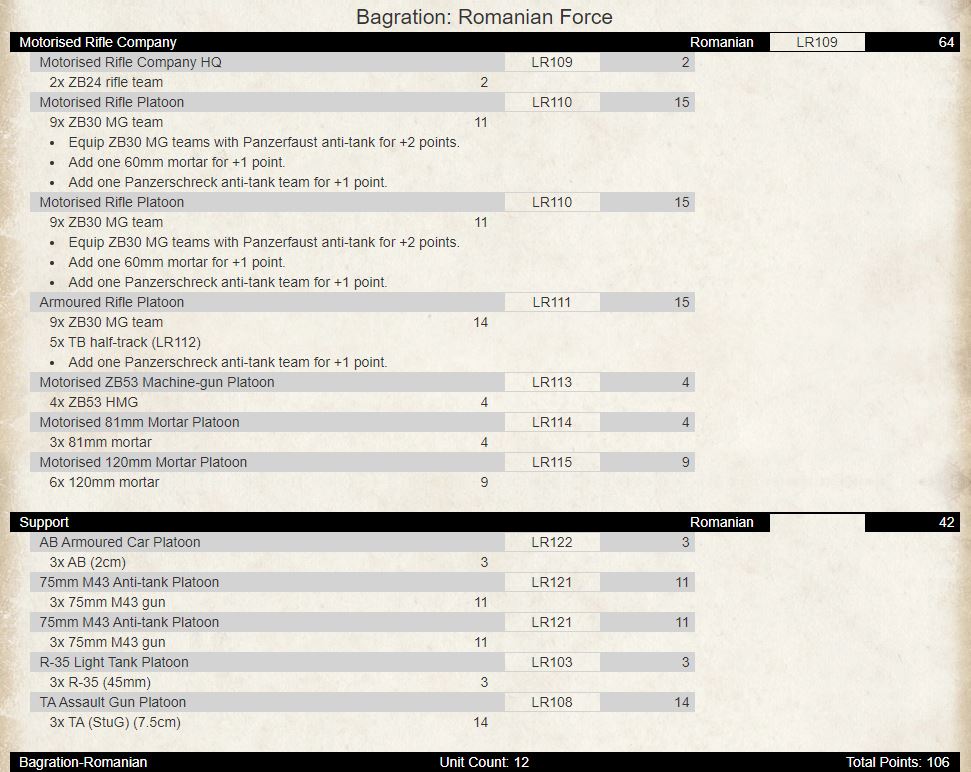

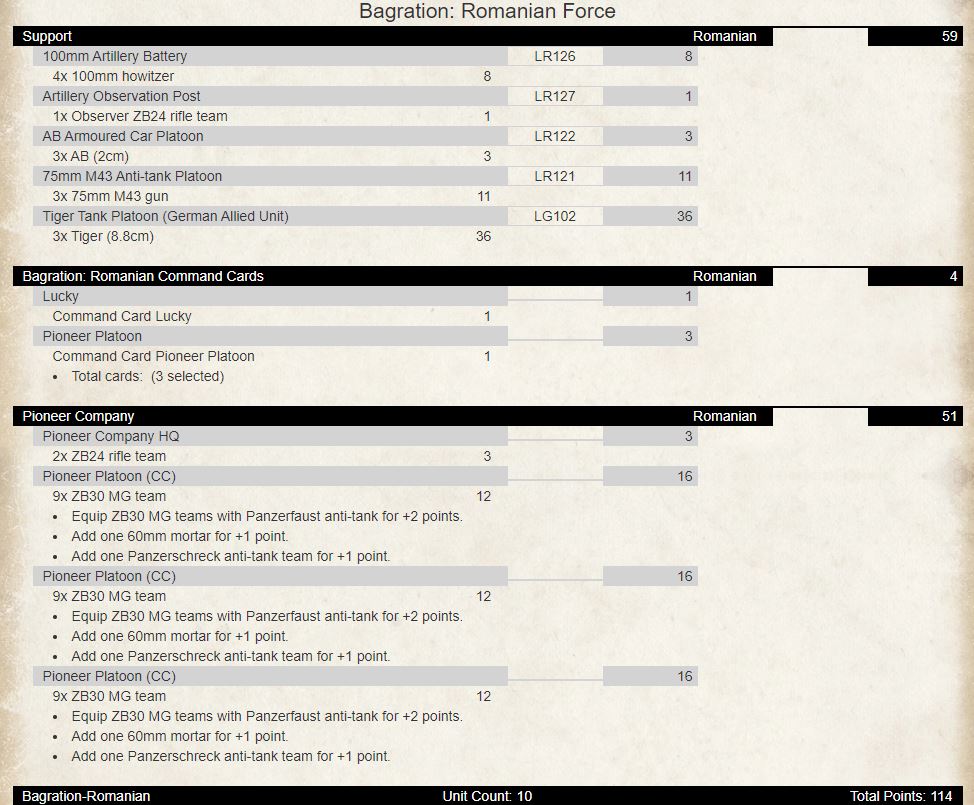
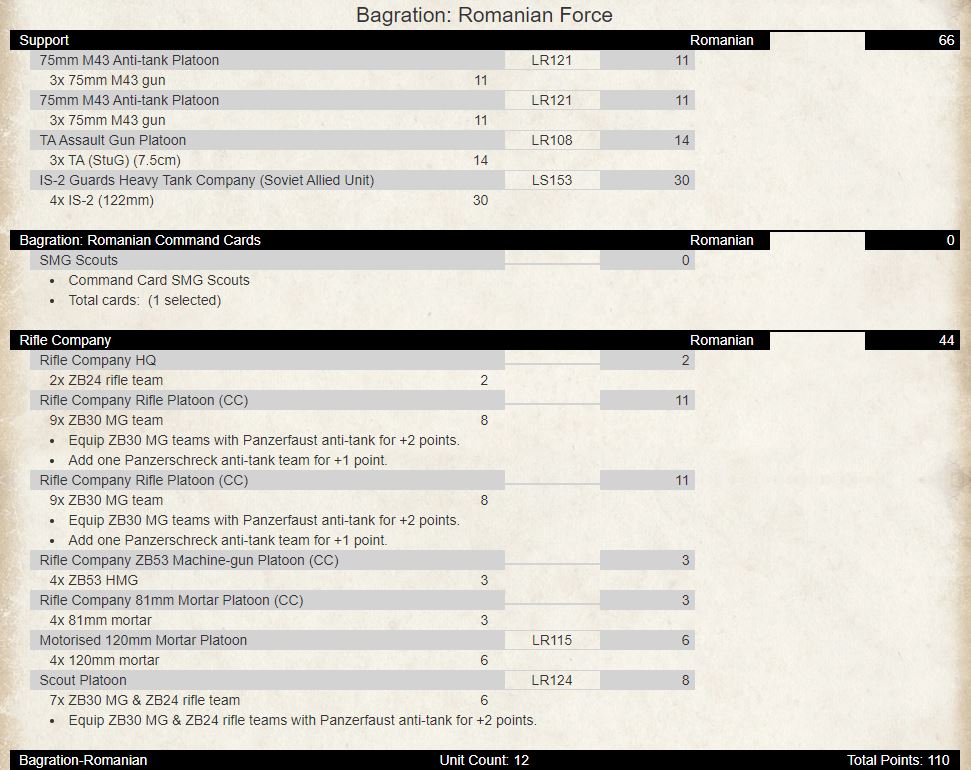
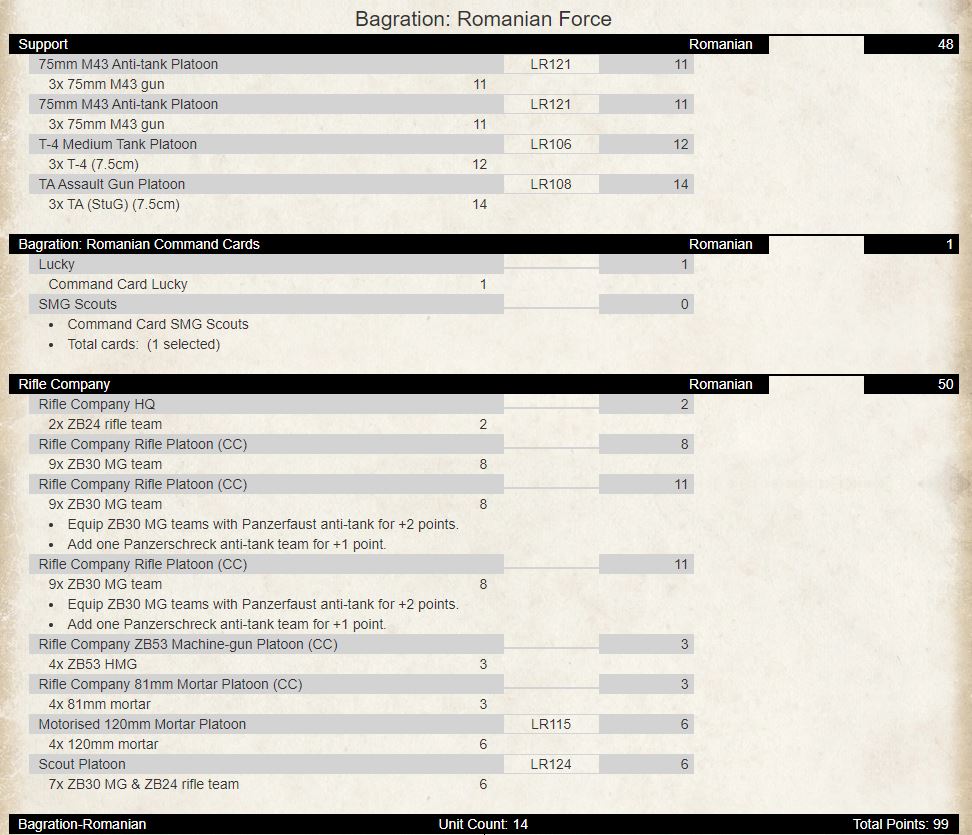
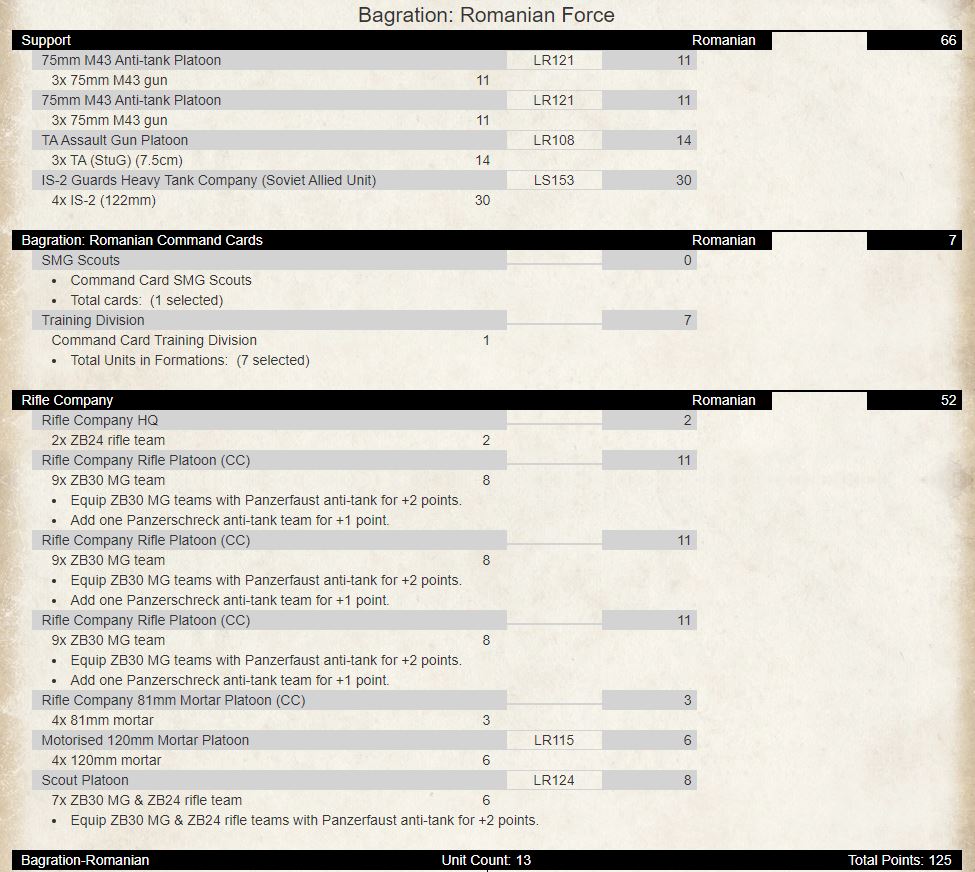
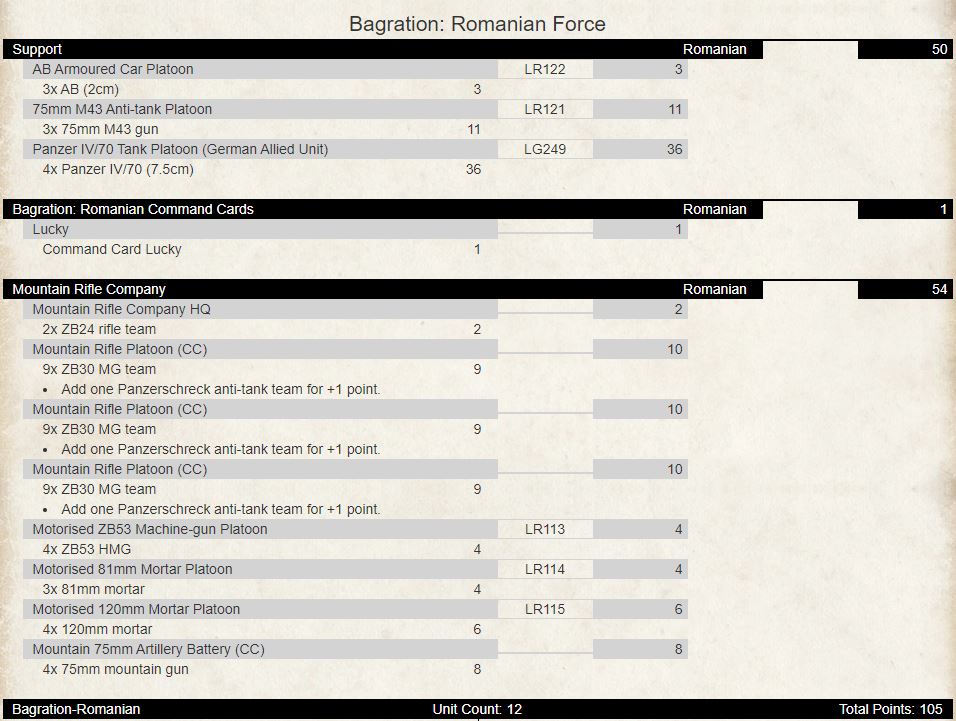
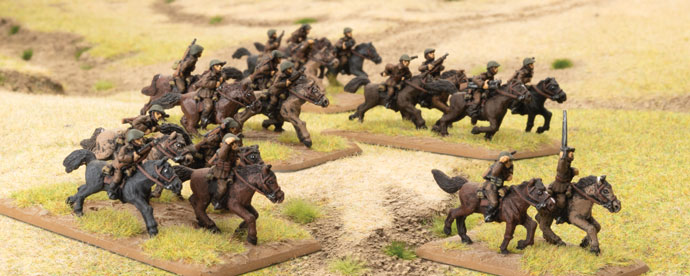
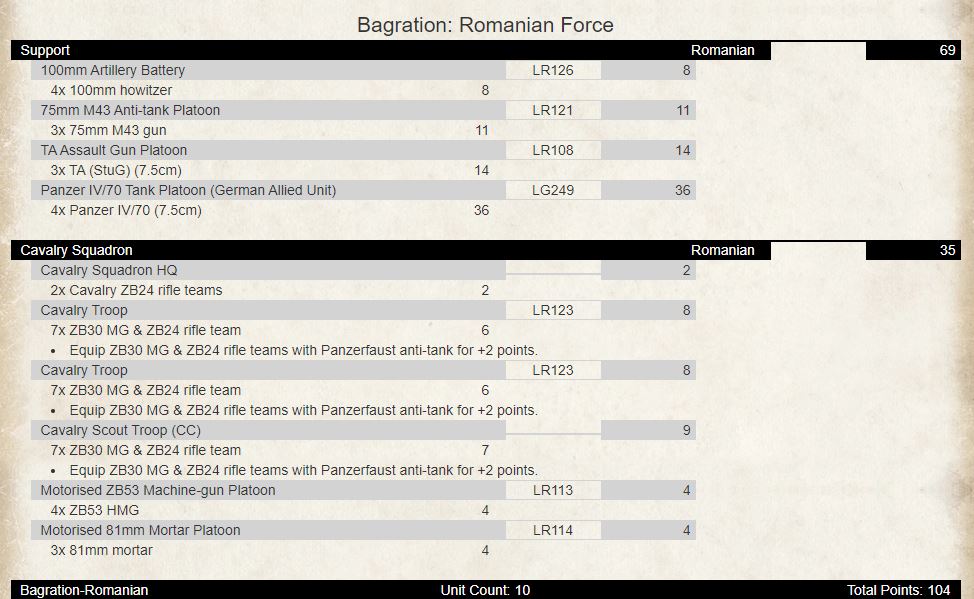
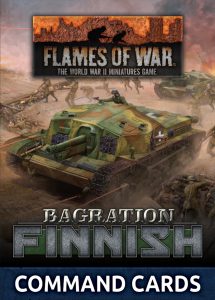
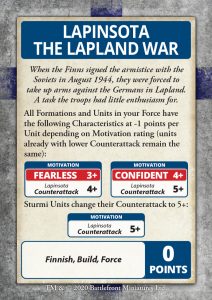 As you might expect, the Bagration: Finnish have many of the same Command Cards as other nations like Softskin Transport, Lucky, etc. However, you will also find a great variety of cards for Warriors, Unit and Formation builds, as well as cards that enhance a particular part of your Forces capabilities. You will find plenty of flavourful cards as well to give your force a feel all of its own.
As you might expect, the Bagration: Finnish have many of the same Command Cards as other nations like Softskin Transport, Lucky, etc. However, you will also find a great variety of cards for Warriors, Unit and Formation builds, as well as cards that enhance a particular part of your Forces capabilities. You will find plenty of flavourful cards as well to give your force a feel all of its own.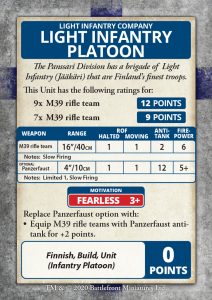

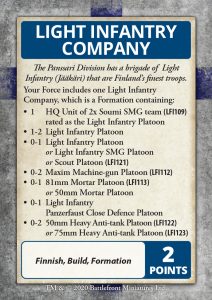
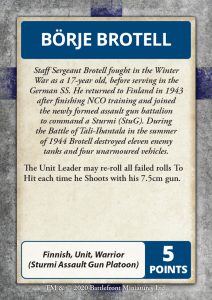 There are four Warriors to field with the Finns. One of these is Borje Brotell who fought in 1944 is a Sturmi StuG assault gun commander. He and his crew destroyed eleven Soviet tanks during the Battle of Tali-Ihantala. Hi is rather handy with his Sturmi’s 7.5cm gun.
There are four Warriors to field with the Finns. One of these is Borje Brotell who fought in 1944 is a Sturmi StuG assault gun commander. He and his crew destroyed eleven Soviet tanks during the Battle of Tali-Ihantala. Hi is rather handy with his Sturmi’s 7.5cm gun. With Livio Tonazzo
With Livio Tonazzo
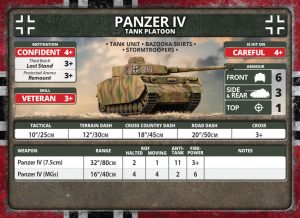
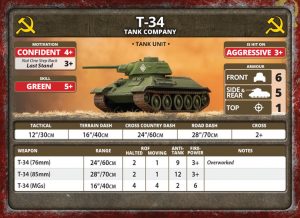 The T-34 has a front armour value of 6, a side Armor value of 4, and a top armour value of 1. The values are practically the same as those of the Panzer IV except that of the side armour which makes the Russian tank slightly better in assaults and more resistant to blows from the side. In truth you will notice that medium tanks are not exactly excellent for assaulting troops armed with anti-tank weapons such as the Panzerfaust, Panzerschreck, bazooka or PIAT. Against infantry that don’t have anti-tank weapons, a side armour of 3 is more than enough. This point of difference shouldn’t mean much. As for the attacks on the flank, on the other hand, you shouldn’t have big problems manoeuvring medium tanks appropriately and avoiding them if you consider them dangerous. The T-34 also doesn’t have a bazooka skirt!
The T-34 has a front armour value of 6, a side Armor value of 4, and a top armour value of 1. The values are practically the same as those of the Panzer IV except that of the side armour which makes the Russian tank slightly better in assaults and more resistant to blows from the side. In truth you will notice that medium tanks are not exactly excellent for assaulting troops armed with anti-tank weapons such as the Panzerfaust, Panzerschreck, bazooka or PIAT. Against infantry that don’t have anti-tank weapons, a side armour of 3 is more than enough. This point of difference shouldn’t mean much. As for the attacks on the flank, on the other hand, you shouldn’t have big problems manoeuvring medium tanks appropriately and avoiding them if you consider them dangerous. The T-34 also doesn’t have a bazooka skirt!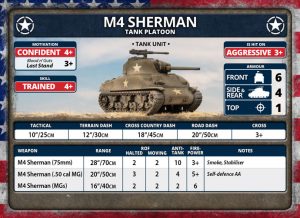 The Sherman is the allied counterpart of the Panzer IV. These two tanks have the same front armour value of 6 and a top armour of 1. The Sherman has a better side armour value, but as we said for the T-34 it shouldn’t be too important. The speed of the Sherman, however, is equal to that of the Panzer IV. Both tanks have the same Tactical and Dash movements values. Nobody will take advantage! The Anglo-American gun is inferior to the German one by having an Anti-tank value of 10 instead of 11 and a range of 28 “instead of 32”. The American Sherman version has a Moving Rate of Fire of 2 so you need to pay close attention. Those two shots with anti-tank 10 are better than one shot at anti-tank 11 in particular against a 6 armour. worse. The machine guns are also in this case the same, but the American Sherman also has the .50 calibre for anti-air defence. On the other hand, the Sherman’s ammunition is better, sometimes the smoke bombs can be very important.
The Sherman is the allied counterpart of the Panzer IV. These two tanks have the same front armour value of 6 and a top armour of 1. The Sherman has a better side armour value, but as we said for the T-34 it shouldn’t be too important. The speed of the Sherman, however, is equal to that of the Panzer IV. Both tanks have the same Tactical and Dash movements values. Nobody will take advantage! The Anglo-American gun is inferior to the German one by having an Anti-tank value of 10 instead of 11 and a range of 28 “instead of 32”. The American Sherman version has a Moving Rate of Fire of 2 so you need to pay close attention. Those two shots with anti-tank 10 are better than one shot at anti-tank 11 in particular against a 6 armour. worse. The machine guns are also in this case the same, but the American Sherman also has the .50 calibre for anti-air defence. On the other hand, the Sherman’s ammunition is better, sometimes the smoke bombs can be very important.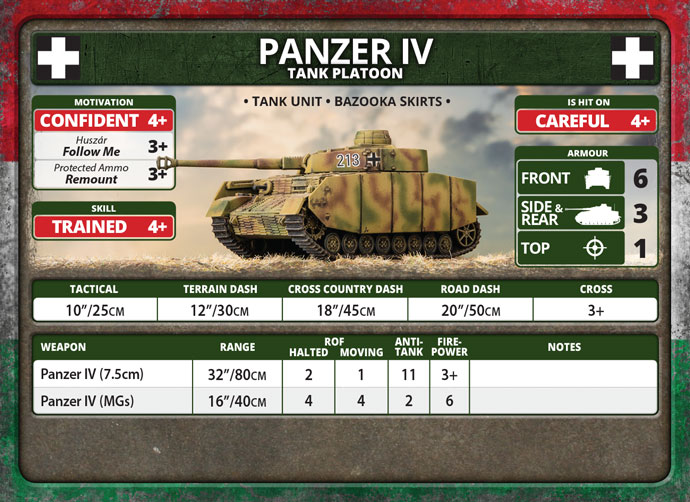
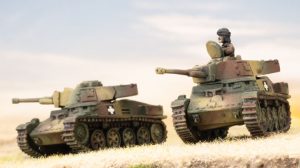 Another optional slot is the Toldi II which allows you to have an armoured reconnaissance in formation at a very modest price. The Toldi II is a completely ineffective tank against enemy tanks, but lethal against enemy armoured cars. The platoon can also be very numerous, including up to 5 tanks. The Toldi II has both the Scout and Spearhead rules. Wonderful! The last slot, on the other hand, is dedicated to air coverage which is always useful. Nimrod’s platoon consists of only two pieces, which however have a ROF of 3 when stationary and a firepower of 4+ that has a fair chance of shooting down enemy aircraft.
Another optional slot is the Toldi II which allows you to have an armoured reconnaissance in formation at a very modest price. The Toldi II is a completely ineffective tank against enemy tanks, but lethal against enemy armoured cars. The platoon can also be very numerous, including up to 5 tanks. The Toldi II has both the Scout and Spearhead rules. Wonderful! The last slot, on the other hand, is dedicated to air coverage which is always useful. Nimrod’s platoon consists of only two pieces, which however have a ROF of 3 when stationary and a firepower of 4+ that has a fair chance of shooting down enemy aircraft.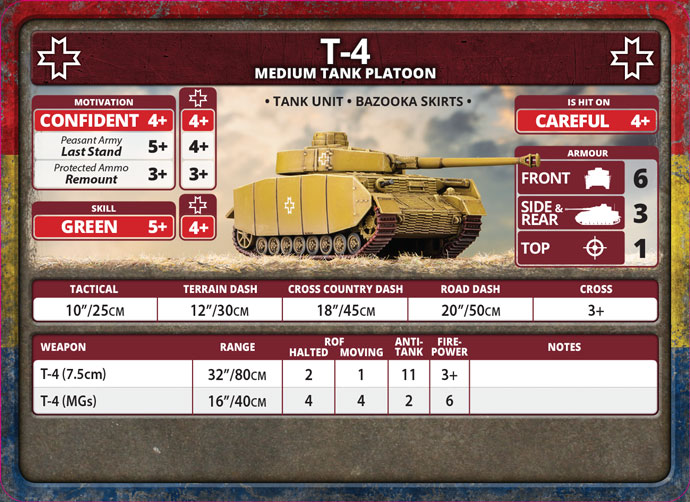
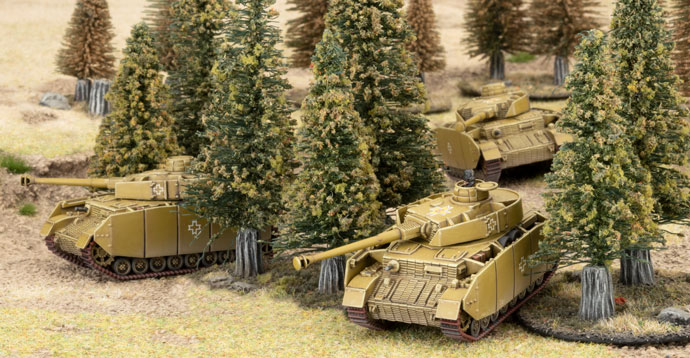
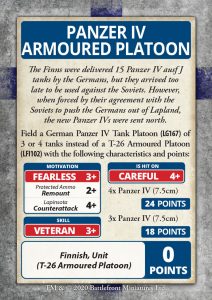 Surprise surprise! Even if there are no Panzer IVs in the book, the Finns still have the option of deploying Panzer IVs! How? Thanks to a wonderful Command Card that you will find in the deck! In 1944 the Germans sent 15 Panzer IV Js to their Finnish allies. They latter, however, signed the armistice before these tanks could be used against the Soviets. In return, the Finns used the Panzer IVs against the Germans themselves during the Lapinsota War. Due to the very small numbers the Finnish army received Panzer IVs do not have a dedicated formation but a T-26 platoon can be upgraded to a Panzer IV Platoon. The platoon can only consist of 3 or 4 tanks. Everyone knows that Finns are exceptional fighters and their training and morale are truly enviable. With a Fearless Morale and Veteran Skill they will pass most of their tests with a result of 3+. The Remount check also takes advantage of the Protected Ammo so it only needs a 2+ while the Counterattack suffers from the lack of motivation of the Finns to fight against their previous allies and therefore needs a 4+. They are of course Hit on 4+ in line with the rest of the Finnish. The cost in points however increases from these exceptional values and the Finnish Panzer IVs are more expensive than the German ones by about 12%.
Surprise surprise! Even if there are no Panzer IVs in the book, the Finns still have the option of deploying Panzer IVs! How? Thanks to a wonderful Command Card that you will find in the deck! In 1944 the Germans sent 15 Panzer IV Js to their Finnish allies. They latter, however, signed the armistice before these tanks could be used against the Soviets. In return, the Finns used the Panzer IVs against the Germans themselves during the Lapinsota War. Due to the very small numbers the Finnish army received Panzer IVs do not have a dedicated formation but a T-26 platoon can be upgraded to a Panzer IV Platoon. The platoon can only consist of 3 or 4 tanks. Everyone knows that Finns are exceptional fighters and their training and morale are truly enviable. With a Fearless Morale and Veteran Skill they will pass most of their tests with a result of 3+. The Remount check also takes advantage of the Protected Ammo so it only needs a 2+ while the Counterattack suffers from the lack of motivation of the Finns to fight against their previous allies and therefore needs a 4+. They are of course Hit on 4+ in line with the rest of the Finnish. The cost in points however increases from these exceptional values and the Finnish Panzer IVs are more expensive than the German ones by about 12%.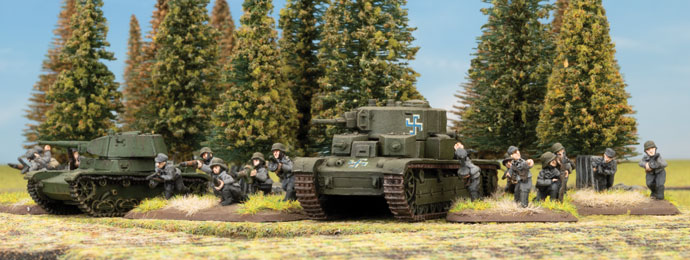
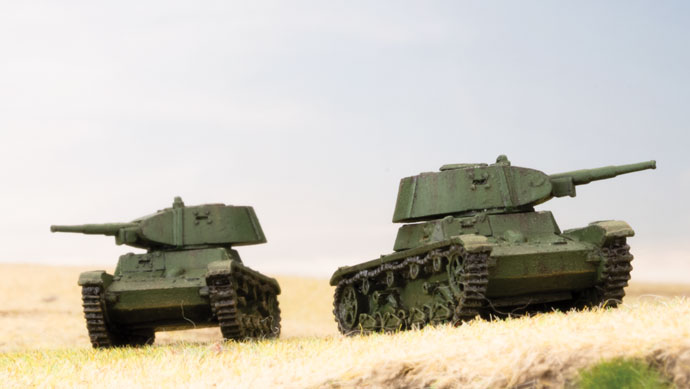
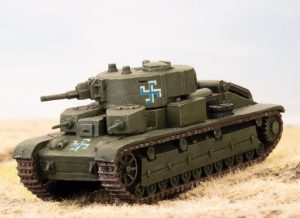 The T-28: Old School Firepower
The T-28: Old School Firepower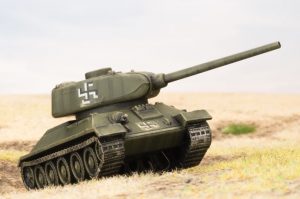 The T-34: Turning the Tables on the Soviets
The T-34: Turning the Tables on the Soviets The KV-1: Big and Scary
The KV-1: Big and Scary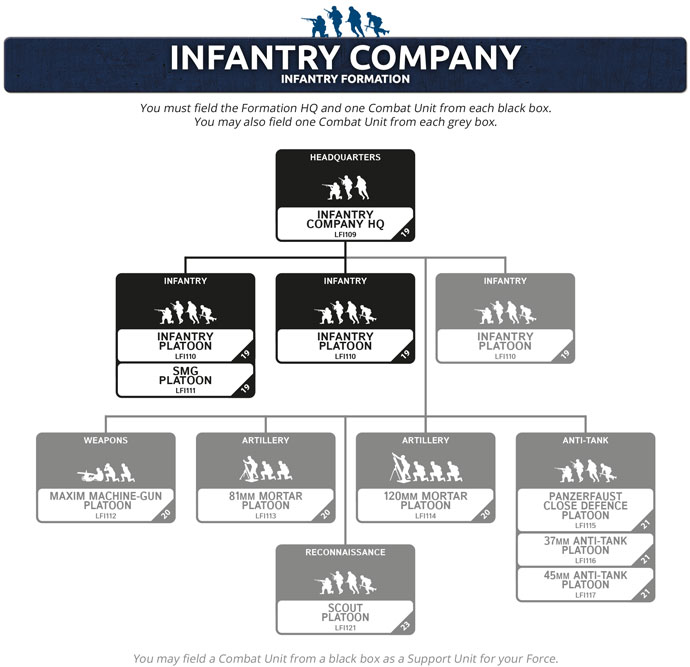
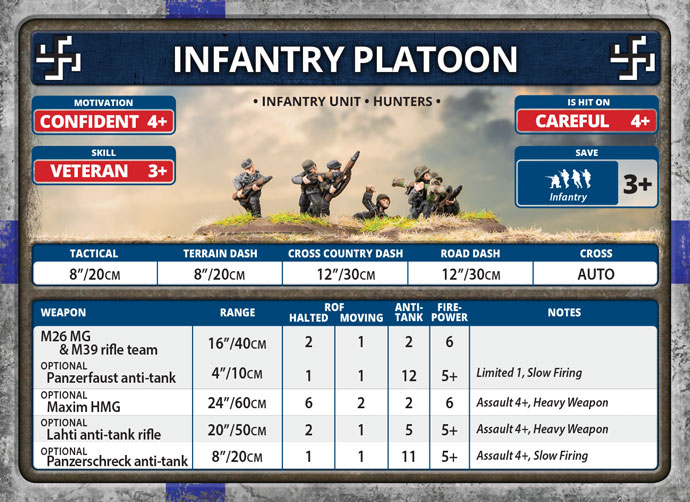
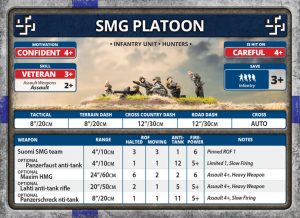 The SMG platoon is configured the same as the infantry platoon except all teams are armed with SMGs instead of rifles and MGs. Difference is 8pts for seven teams and 10pts for nine teams. The Panzerfaust, HMG, Lahti and Panzershreck options are the same here also.
The SMG platoon is configured the same as the infantry platoon except all teams are armed with SMGs instead of rifles and MGs. Difference is 8pts for seven teams and 10pts for nine teams. The Panzerfaust, HMG, Lahti and Panzershreck options are the same here also.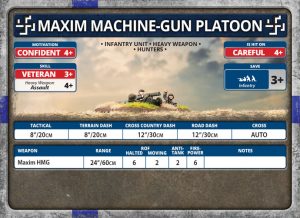 The next platoon to look at is the Maxim Machine-Gun platoon where you can have four of these teams for 5pts. Something to consider taking, especially if you do not take them in the infantry platoons. Adds another platoon for the formation count. I do not always take these but can be useful to bolster defending an objective. You can also take the Machine-Gun Nests command card for 2pts. This will allow you to place you HMGs across the table in your deployment zone as independent nests. No longer counts toward your formation anymore but that depends on your playstyle and how you want to use them.
The next platoon to look at is the Maxim Machine-Gun platoon where you can have four of these teams for 5pts. Something to consider taking, especially if you do not take them in the infantry platoons. Adds another platoon for the formation count. I do not always take these but can be useful to bolster defending an objective. You can also take the Machine-Gun Nests command card for 2pts. This will allow you to place you HMGs across the table in your deployment zone as independent nests. No longer counts toward your formation anymore but that depends on your playstyle and how you want to use them.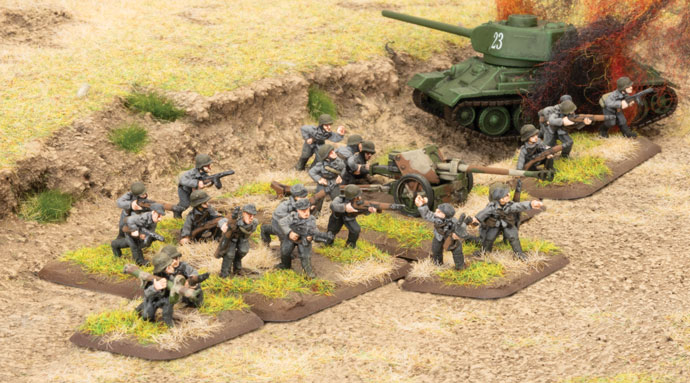
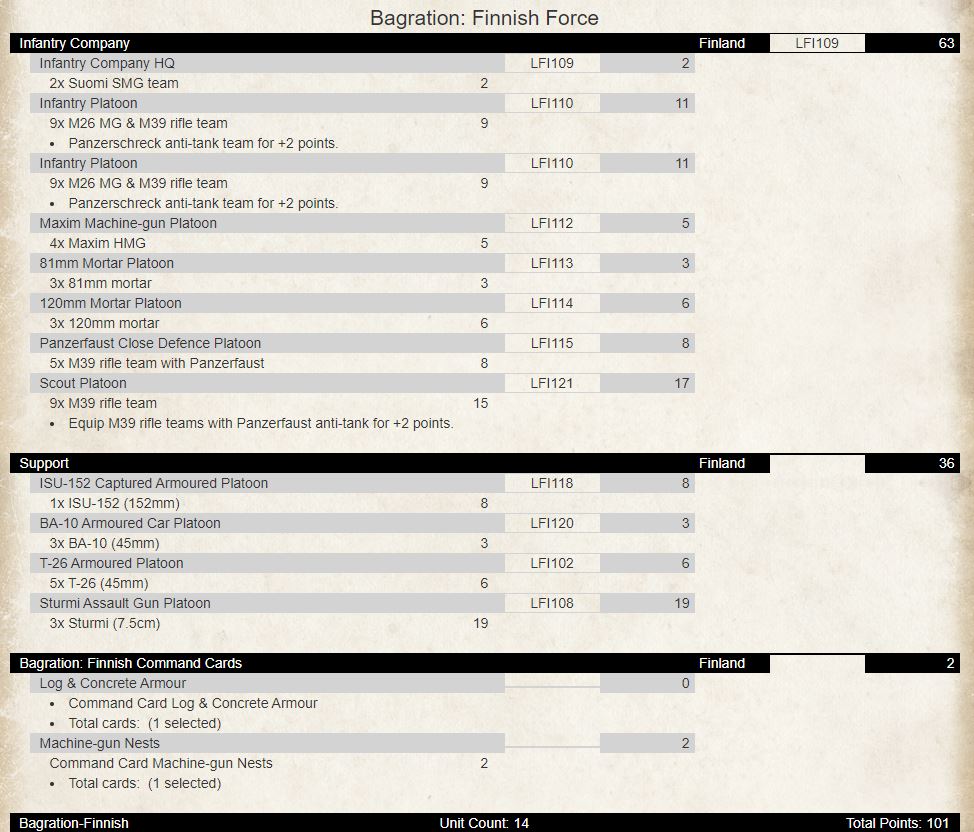
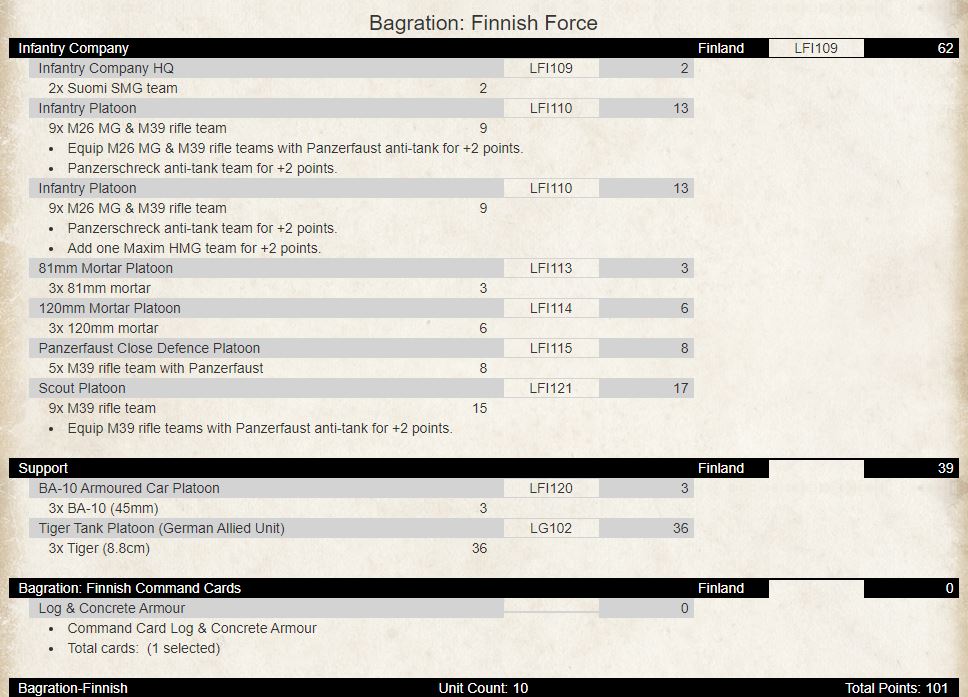
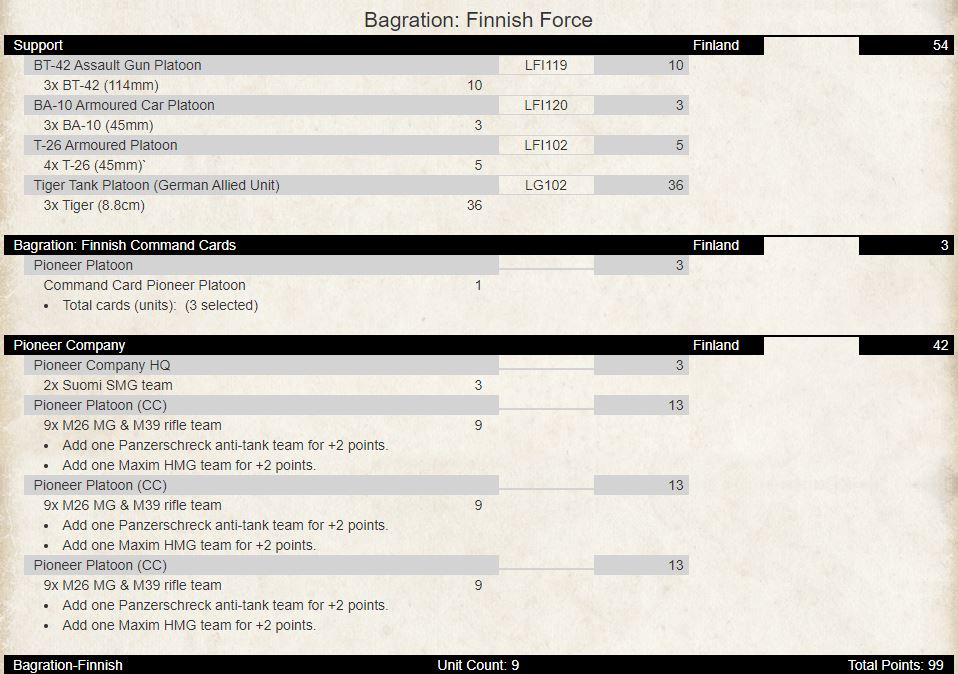

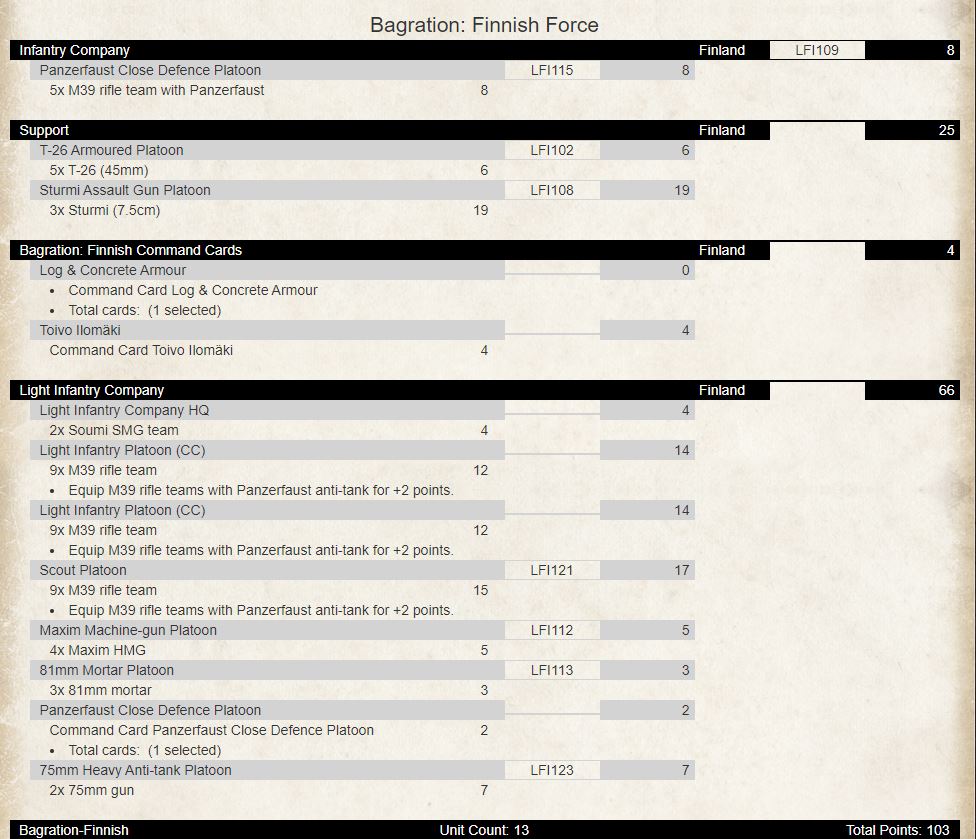
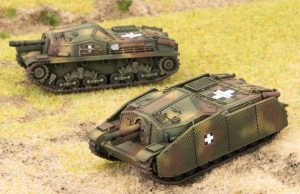 With Joe Saunders
With Joe Saunders
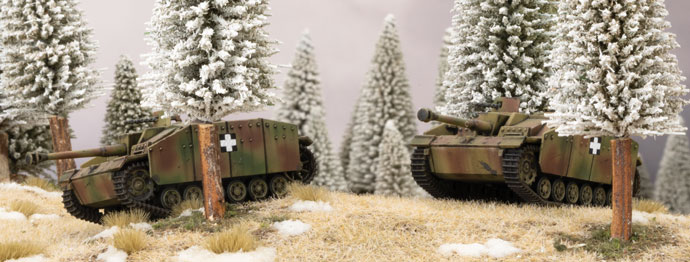
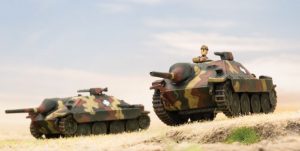 Hetzer Assault Gun
Hetzer Assault Gun
